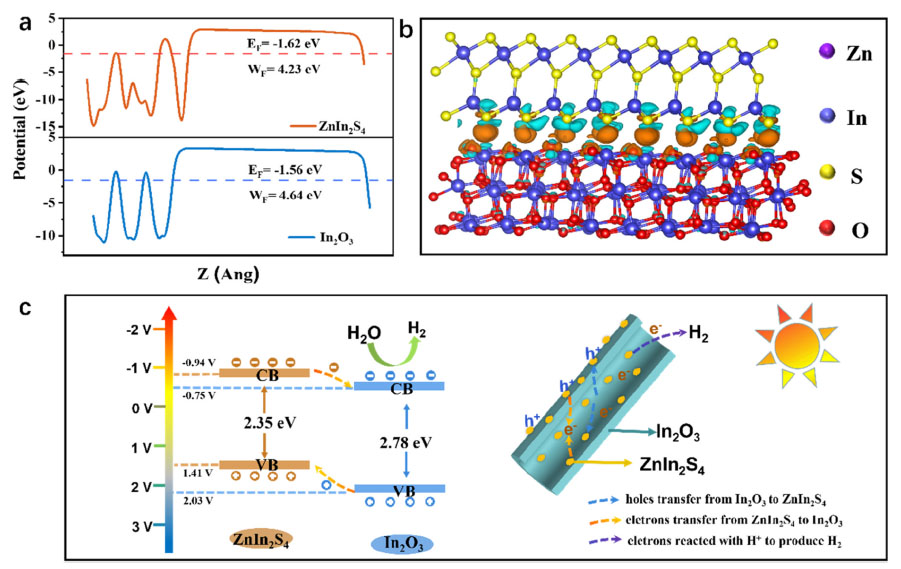Ping Lua,b, Ke Liub,, Yan Liub, Zhilin Jib, Xiaoxia Wangb, Bin Huib, Yukun Zhub*, Dongjiang Yangb*, Luhua Jianga*
a College of Materials Science and Engineering, Qingdao University of Science and Technology, Qingdao 266042, P. R. China
b School of Environmental Science and Engineering, State Key Laboratory of Bio-fibers and Eco-textiles, Qingdao University, Qingdao 266071, P. R. China
*Corresponding authors. E-mail addresses: d.yang@qdu.edu.cn(D. Yang); yukunzhu@qdu.edu.cn (Y. Zhu); luhuajiang@qust.edu.cn (L. Jiang)
Abstract
Photocatalytic hydrogen evolution reaction (HER) under sunlight is seen as the most promising way to produce renewable fuels. Indium oxide (In2O3) has attracted much attention in the field of solar hydrogen production due to its moderate band gap, which can be easily driven by visible light without photo-corrosion. However, the efficiency of HER of In2O3 is currently unsatisfactory due to fast recombination of photogenerated electrons and holes. To enhance the efficiency of HER of In2O3, herein, heterostructured In2O3/ZnIn2S4 is precisely constructed via in-situ growth of ZnIn2S4 on the In2O3 hollow fibers. The In2O3/ZnIn2S4 heterostructure exhibits a significantly enhanced photocatalytic activity compared with pure In2O3 hollow fibers and ZnIn2S4 with HER rates of 2.18 mmol/g/h. Such efficient photocatalytic hydrogen production is attributed to the tightly-bound interface between (001) planes of flake ZnIn2S4 and (222) planes of In2O3. Density functional theory calculations indicate compactly interface enabling efficient charge transfer and separation, which benefits the photocatalytic HER performance.
Keywords: Heterostructures; interface; photocatalytic; hollow fibers; hydrogen evolution
https://doi.org/10.1016/j.apcatb.2024.123697



